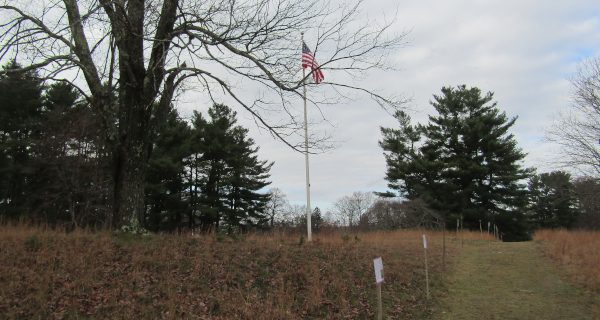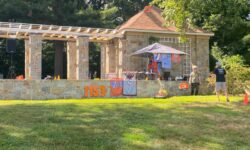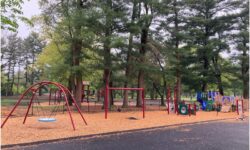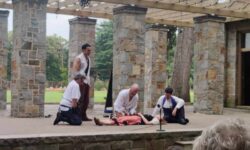By Amelia Tarallo
Hometown Weekly Staff
Sometimes it can be hard to imagine our local towns playing a part in major historical events. Sure, Massachusetts is where the Pilgrims landed, where King Philip's War took place, and where the Revolutionary War exploded into existence - but most events seem to happen in far-off places, a long way from Walpole.
For its part, the staff at Bird Park appears to be reminding people about Walpole’s connections to historical events. In the past few months alone, they've tackled women’s suffrage and the history of Indigenous peoples.
Most recently, park-goers had the chance to learn about the American Civil War. Visitors could find the latest exhibit in front of Bird Park’s flagpole. Stretching end to end, the exhibit informed people not only about the Civil War, but the Walpole residents who played a significant role in the conflict.
The Walpole connection to the Civil War began on April 30, 1861, when, according to one of the informational posts, “Walpole voted to borrow money, not exceeding $5,000, to pay bounties to men who volunteered as soldiers, and to pay stipends to their families.” The connection grows even closer with a Bird Family member standing out, the sign noting: “A committee, including Francis William Bird, owner of the Bird Mill in East Walpole, was appointed to disburse the aid.” Walpole exceeded its quota for volunteers and sent 18 men to help other towns fulfill their respective quotas.
Following an introduction to the Civil War and Walpole’s own general entrance into the conflict, the next few posts educated visitors about individual residents' roles. Among them were 1st Lieutenant/Adjutant James W, Bacon, Private Lowell Ebenezer Hartshorn, Corporal George Henry Morse, and Privates Martin Lewis Fisher, Nathan Warren Fisher, and Simon Edwin Fisher. All of these men played a crucial role in the war, and some even gave their lives for their country.
Prior to the war, 1st Lieutenant/Adjutant James W. Bacon lived in Walpole, where he worked as a painter. He initially served with the 23rd Massachusetts Infantry. He re-enlisted after completing his service, then joined the newly-formed 36th United States Colored Infantry. He was threatened by the Confederate government for leading African-American troops, but survived the war and succumbed to malaria at age 55. His work with the 36th United States Colored Infantry is memorialized in Washington D.C. at the African American Civil War Memorial.
While Union troops participated in battles, back home, Walpole residents encouraged abolitionism. Massachusetts had particularly embraced the movement, even prior to the Civil War. Reverend Edwin Thompson, a Universalist minister who resided in Walpole, was a leader of the movement. Other Walpole residents even took in African-Americans who were escaping slavery and making their way to Canada. Francis William Bird and other iconic members of the Bird Club supported abolitionism and used their connections to increase momentum. Bird not only believed in ending slavery, but also believed that “a more perfect union [could be achieved] by the expulsion of slave states,” according to one of the informational posts.
Any excuse to visit Bird Park is a good one, and doing so for its Civil War walk proved to be enlightening. Many of the lessons Walpole residents learned during the Civil War can still be applied today: the necessity of freedom, the importance of working together to support our fellow humans, and using whatever connections, resources and talents we have for good.























